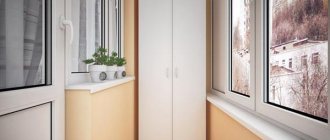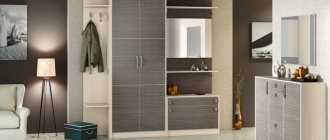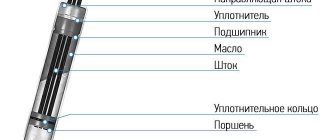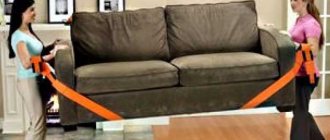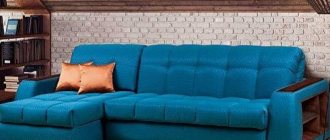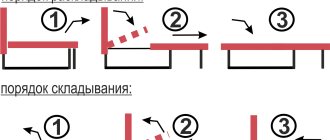You don't have to be a pianist to appreciate the beauty, reliability and ease of movement of piano hinges. This hardware was originally used to secure and smoothly open a heavy piano lid, hence its name. Today it has many more uses, especially in furniture and sheet metal construction.
Most doors are usually equipped with two card hinges. The load from the heaviness of the canvas is concentrated in two places, with most of it falling on the top loop. Over time, problems with the door sagging and closing often arise. Before replacing all the hinges or replacing only the worn ones, it is worth considering an alternative option - this is the transition to a piano hinge, which is located almost along the entire length of the door leaf and evenly distributes the load, unlike several canopies of another type.
What are the advantages of piano hinges?
Piano Hinge Applications
Although they are not as commonly used as standard hinges, there are several good reasons to choose piano hinges over another hinge mechanism:
- Ability to withstand heavy weight and intensive use.
- Installation along the entire length of the door ensures uniform distribution of the weight of the door leaf on the frame.
- The continuous hinge is fixed to the entire height of the opening, thanks to which it holds the door in a stable position without the risk of sagging or distortion.
- Solid hinges also help to avoid warping of wooden doors, which is especially useful when the doorway width is 1000-1200 mm.
- Smooth, effortless turning action.
- The continuous hinge helps close the gap between the door and frame, creating a tighter seal and eliminating heat loss from the room.
- The absence of a gap between the door and the frame helps prevent fingers from getting caught, which improves safety, especially when children use the door.
- Possibility of cutting into pieces according to the length of the door leaf, leaf or lid.
- Invisibility on furniture doors and facades.
But there are also disadvantages:
Piano hinges are long and narrow, so they can bend if handled or transported roughly. However, they can be aligned. After installation, they do not make it possible to adjust the furniture façade (the size of the gaps between the elements), unlike standard adjustable furniture hinges, so installation of the “grand piano” requires extreme precision. During operation, serious problems rarely arise with it, with the exception of squeaking, which can be easily eliminated with lubricant, for example, WD-40 in an aerosol can.
Characteristics
Advantages and disadvantages of piano hinges
Despite the fact that piano hinges are considered outdated fittings that were widely used several decades ago, they can still be found quite often in new furniture. Piano hinges have the following advantages that cannot be ignored:
- Simplicity of design, which includes a minimum number of elements.
- Easy installation that does not require the use of special equipment and tools.
- Problem-free operation and maintenance of the fittings.
- Affordable price on the furniture fittings market.
- Ensuring increased rigidity of the entire structure.
The list of advantages is really long, but with piano hinges not everything is so rosy. The main disadvantage of such fittings is that they are obsolete, which is why they are being actively replaced by other types of hinges. If performance characteristics are of decisive importance to you, do not pay attention to the history of this fittings - it copes well with its purpose and can be safely installed in furniture.
Below you can view photos of piano hinges to clearly see how they differ in design. You will undoubtedly notice their resemblance to card fittings.
Piano hinges installed on furniture
Design features
Piano hinges are almost identical in design to card hinges that are familiar to the eye - they have the same structure, with the exception of a higher length, which is significantly larger than the width of the fittings. Such hinges are often made by skilled home craftsmen in artisanal conditions due to the fact that factory production of piano hinges is gradually disappearing, and such fittings can now only be found in wooden furniture.
Loops can be cut to the desired length
Where is it advisable to use piano hinges?
Due to their strength and durability, piano hinges are ideal for installation on heavily used doorways, as well as furniture doors and drawer lids that are constantly opened and closed. They are simply irreplaceable in movable structures that need to be given additional rigidity.
Here are some examples where you can use them:
- Fire doors.
- Sliding partitions "accordion".
- Fence openings, cage doors.
- Folding sides of the tractor hood.
- Doors to barns, storage rooms, basements, showers.
- Hatches, instrument panels and other equipment for ships, yachts, and aircraft.
- Wardrobes, ottomans, chests, book tables, folding tables, folding seats.
- Boxes for tools, toys, equipment.
What are the factory dimensions of a piano hinge?
The fittings market offers a large selection of length sizes from 100 to 3500 mm. The width, measured from the edge of one card to the edge of the other, can range from 25 to 50 mm, and the thickness from 0.5 to 3.0 mm. The placement, weight and size of the doors determine the width, thickness and length of the piano hinge.
The most popular standard sizes:
- Length: 545; 766, 815; 1000; 1800; 2400; 3000 mm.
- Open width: 20; 25; thirty; 38; 50 mm
- Metal thickness: 0.6; 0.8; 1.0; 1.5 mm.
Long furniture hinges are one of the most versatile, as their length can be adjusted to fit any size of parts being connected to suit your project. To cut them, you can use a grinder or a hacksaw. They have ready-made holes for fastening or may be without them. The latter involve installation by welding or self-production of holes with the required pitch.
How to choose the right one
When choosing piano hinges, you need to pay attention to the following parameters:
- Material of manufacture. Modern piano hinges are usually made from materials such as brass, nickel, stainless steel and aluminum, as well as using galvanized metals. It is worth remembering that steel provides high reliability and durability of the fittings, while zinc and brass provide increased protection against corrosion.
Steel hinges with different shank
- Piano hinge sizes. Fittings may vary in length, width and thickness. Make your choice depending on the parameters of the furniture - its dimensions and the weight of the doors.
Piano hinge size chart
- Cost and manufacturer. Obviously, it is best to purchase furniture hinges from reliable manufacturers that have been tested by many customers at a price above the minimum. Cheap fittings from unknown suppliers are unlikely to provide you with everything necessary for long-term and reliable operation of the hinges.
Choose the right hinges so that in the future you will not encounter such defects as misalignment (and piano hinges cannot be adjusted), poor shuttering, and squeaks when opening and closing furniture doors. It's better to spend more now than to lose even more later.
Selection of piano hinges by material
They are available in a wide range of materials and finishes such as steel, A2, A4 stainless steel, galvanized, nickel and brass plated steel, aluminium, solid brass, ensuring their versatility for a wide range of applications across all manufacturing sectors.
- Steel:
Has the greatest strength, moderate cost, but is not resistant to corrosion in unstable conditions. The best application for steel hinges is in a controlled environment, such as inside buildings, where temperature and humidity are maintained at normal levels. - Stainless Steel:
Also has great strength and in addition, it is resistant to rust in humid environments and outdoors. Stainless steel piano hinges are hygienic, which allows them to be used in medical and food equipment. They also come in a beautiful satin finish or high-gloss polish. - Brass:
does not corrode, is resistant to oxidation and is very decorative. However, it has less strength than steel and stainless steel. - Aluminum:
a lightweight metal with high anti-corrosion properties. Aluminum hinges are characterized by aesthetics and low cost, but under high loads they can bend, which is why they are not suitable for use in heavy door structures.
Installation process
Let's start with preparation
Before you start installing piano hinges, you need to prepare the following tools:
Marking the installation location for piano hinges
You may also need a drill and an 8 mm drill bit for countersinking. This procedure is not necessary if the holes on the hinge are staggered (necessary for a tight fit).
Installation of furniture fittings
The advantage of piano hinges is that almost always to install them there is no need to make grooves in the furniture facades - it is enough to install the fittings using the overlay method. If you don't know exactly how to do this, the following step-by-step guide will help you:
In a similar way, each stainless piano hinge installed at this stage is screwed to the furniture body, observing the position of the door in space (this can be checked using a small building level). Remember that you need to tighten the outermost screws first, and only after checking the correct position of the sash relative to the body can you gradually tighten the remaining middle screws of the hinge.
Install hinges correctly to ensure long-lasting, stable operation, and ensure proper maintenance such as lubrication. You can also watch a useful video.
Source
How to install furniture piano hinges?
Let's look at the example of installing an overhead cabinet door, that is, one that is hung over the side walls. In this case, the piano hinge is first attached to the inside of the door, and then to the end of the side wall of the cabinet. The door opening angle will be 90 degrees. During installation, the piano hinge requires precise alignment and screwing, since small distortions can lead to incorrect fit of the facade.
Installation sequence:
Step 1.
Using a hacksaw, cut the required length corresponding to the height of the facade.
Tip: If the last hole for the screw is too far from the end of the strip (more than 40 mm), then it is advisable to make an additional countersunk hole at a distance of 15 mm from the end.
Step 2.
Smooth rough edges using a hand sander or file.
Step 3.
Attach the hinge to the inner face of the facade, and the hinge should be flush with its edge. For fasteners, use small self-tapping screws 3x16 mm or 3.5x16 mm.
Tip: It is quite difficult to screw self-tapping screws into chipboard, so first mark the fastening points with an awl and drill holes with a drill whose diameter is 1 mm less than the diameter of the fastener.
Step 4.
Place the hinge as accurately as possible and secure with the two outermost screws, then screw in all the rest.
Step 5.
Install the door in its place, aligning the façade in height. Mark the mounting points on the end of the cabinet wall, drill holes and screw the hinge.
Note.
If the design stipulates that the door is inserted between the walls of the cabinet, then the hinge is first screwed to the wall and then to the end of the door.
Selection and installation methods
Before purchasing a specific hinge model, you need to know the angle of the cabinet front to ensure convenient door opening.
To place the hinges correctly, purchase a template. Companies such as Blum offer special marking devices as an accompanying product for their products. Using the template, you can easily make markings for self-tapping screws on the front and side of the cabinet, and also accurately determine the center of the cutout using a crown for the recess for the cup.
If you learn video better than text, watch Evgeniy’s video from the BlackAsb channel, which clearly shows the rules for installing furniture hinges:
Piano hinge loads
It is difficult to say unequivocally how much weight your piano hinge will support, because it depends on several factors. First of all, its load-bearing capacity is determined by its length, secondly, the number of fasteners, and thirdly, the base material. It is known that chipboard, fiberboard, and laminated chipboard hold screws worse than solid wood. Moreover, a screw screwed into the face of the slab holds better than at the end.
Here are some examples:
It has been experimentally established that a standard 600 mm piano hinge for furniture is capable of holding a door weighing up to 27-30 kg
.
And since the load is distributed along its entire length, the weight spread is approximately 5 kg per 100 mm of length
. Considering that 1 m2 of chipboard weighs 11 kg, this fitting can easily support the weight of the doors of large kitchen cabinets.
The 20-25mm wide "grand pianos" are small in length and thickness and are great for use in a horizontal position and in light-duty projects such as furniture ottomans, drawers, caskets and folding tables.
If you prefer a piano hinge or another common type of canopy, know that you have a choice in the Krepcom online store. Here you can buy exactly the fittings you were looking for - doors, windows, furniture, drawers, gates and gates, which are easy to install, visually attractive and durable.
